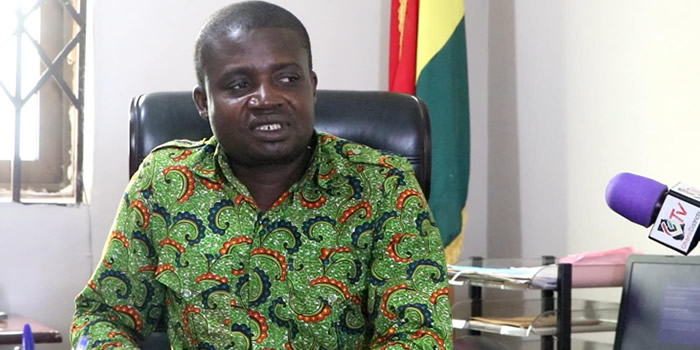

The strategic direction of Gomoa District Assembly is based on analysis of the needs and aspirations of the people of the district as well as the development agenda of the Government of Ghana. In this vein, a district development goal has been formulated. Out of this goal, objectives and strategies have been formulated to guide the development of the district during the planning period under consideration. Projections of the various services and facilities have been outlined in this section as input to determining the required level of services and facilities during the plan period (2006-2009).
District Development Goal
The district development goal reflects the desired state of improvement in the conditions bedevilling the district as analysed from the previous sections. It is also in harmony with the national goal which provides direction for the entire country. The national goal is stated below.
National Goal:
To achieve accelerated and sustainable shared growth, poverty reduction, and promotion of gender equity, protection and empowerment of the vulnerable and excluded within a decentralised democratic environment.
The district goal is also stated below;
District Goal:
To promote sustainable growth through utilisation of available human and natural resources and empowerment of the citizens of Gomoa District to be active in the decision making processes through strengthened sub-district structures.
Development Objectives in Relation to GPRS II
In relation to the district development goal stated above, the following objectives have been developed under the three pillars of GPRS II.
Pillar 1: Private Sector Competitiveness
Development Objective: To facilitate investments by private sector operators in the available human and material resources for creating employment and generating wealth. In order to operationalise the above development objective, specific objectives have been developed. These include the following:
To improve the surface condition of priority feeder roads in the district by 2009;
To facilitate the establishment of storage and processing facilities at Gomoa Fetteh, Nyanyano, Mumford and Apam by 2009;
To promote production and processing of horticultural crops (pineapple, orange, watermelon) in the district by 2009;
To identify, document and market tourism potentials in the district by 2009;
To facilitate marketing of the salt potential of Nyanyano and Apam
Pillar 2: Human Resource Development
Development Objective:
To build the capacity of the human resources for productive activities and enhance participation of the citizenry in the developmental process in the district.
The specific objectives under this development objective are as follows:
To develop skill training programmes for empowering the youth to be gainfully employed
To improve access to potable water in Mumford , Dago, Nyanyano and Apam by 2009
To improve sanitation in communities by 2009
To develop appropriate interventions for the retention of trained teachers in the district by 2009
To improve access to and quality of education.
To improve access to quality health care
Pillar 3: Good Governance and Civic Responsibility
Development Objective:
To create enabling environment (participation in decision making processes, strengthened sub-district structures, gender equity) for peaceful and sustainable development.
Among the specific objectives under this development objective are:
To strengthen sub-district structures by 2009
To promote functional literacy programmes in the district by 2009
To strengthen the capacity of district departments by 2009
To promote mechanisms for addressing chieftaincy and land disputes in the district by 2009.
To develop mechanisms for reducing teenage pregnancy, child labour and child trafficking
Strategies
These are approaches and methods for achieving the specific objectives outlined under each pillar of the GPRS II. They provide focus for identifying series of activities which when implemented will contribute to the achievement of each of the objectives. The strategies are outlined below under each pillar of the GPRS II.
Development Priorities
District Development Priorities Linked to GPRS II Pillars
A short-list of issues from the analysis of needs and aspirations of the communities and Town/Area Councils was compiled and harmonised with emerging issues from the district departments, private sector operators in the district and gaps identified from the performance review of the district in the implementation of the previous plan. The outcomes were subjected to further analyses using a set of criteria. These included the following: Issues that have:
• Great impact on poverty reduction in the district;
• Generate growth in the district;
• Strong linkage with other sectors of the local economy; and
• Environmentally sustainable
Based on the set of criteria above, the stakeholders prioritised issues identified from the communities and Town/Area Councils, district departments, private sector operators, and analysis of the space economy, environmental concerns, civil society groups/NGOs and a host of others. The outcome of the analyses is harmonised development issues categorised under the three pillars of GPRS II, namely; Private Sector Competitiveness, Human Resource Development and Good Governance and Civic Responsibility.
The harmonised development issues are presented in table 2.1 in pdf file below under the three pillars of GPRS II.
Priorities for Human Resource Development
The main issues identified as priorities for human resource development in the district are as follows:
• High rate of youth unemployment
• Poor environmental conditions in communities
• Acute water shortage
• Low retention rate of trained teachers
• High rate of teenage pregnancy
• High illiteracy rate
• Inadequate access to quality education and health services.
The above issues were subjected to POCC analysis and conclusions made as to strategies to be evolved in addressing the prioritised issues. The outcome of the analysis is presented in table 2.3 below.
Priorities for Good Governance and Civic Responsibility
The main priorities identified under this thematic area are as follows:
• Weak sub-district structures
• Poor parental care
• Inadequate capacity of departments of the DA to function effectively
• Child trafficking and child labour
• Land and Chieftaincy disputes
Develoment Programmes
This section of the plan document focuses on the development programmes designed to address the development needs and challenges which provided basis for the formulation of goals, objectives and strategies. Hence, the development programmes are the interventions earmarked for addressing poverty, generating growth in the district economy and creating wealth among people in the district.
Logical Framework for GDA (2006-2009)
The district medium term development plan proposals are presented in a logical framework, (log frame) as shown in table 4.1 below. The log frame provides a summary of interventions under the medium term development plan. The first column of the frame indicates a narrative summary of the overall goals, (National and District) the outputs and activities outlined in the plan. The second column shows indicators of the elements of the narrative summary that could be objectively verified in terms of quality, quantity and time. The third column deals with the sources of information to verify the levels of achievement. The fourth column presents the important assumptions necessary for the achievement of the elements of the narrative summary.
Composite Programme of Action (POA)
The composite programmes of action have been developed out of the logical framework for GDA detailing out each programme/project under the three pillars of the GPRS II. The components of the format for programme of action include activities, location, time frame, indicators, indicative budget, and source of funding and implementation agency (ies).
Monitoring & Evaluation
District Assemblies as Planning Authorities are fully responsible not only for the formulation of development plan but also for their implementation, monitoring and evaluation as enshrined in the Local Government Act 1993, Act 462 and National Development Planning System Act 1994, Act 480. In order to ensure a uniform approach for results based Monitoring and Evaluation in each district, the NDPC has prescribed guidelines to facilitate among other reasons the institution of an effective and efficient system for tracking progress made in the implementation of programmes and projects. The focus of this chapter is therefore to detail out M & E Arrangements for implementing this District Medium Term Development Plan (2006-2009).
Monitoring and Evaluation Framework
The M&E framework is based on guidelines issued by NDPC. It basically includes the definition of indicators for each objective, the type of data to collect, the target set for 2009, source of data, frequency of monitoring and responsibility. The framework is presented below under each pillar of GPRS II.
Implementation of M & E System
The M&E framework detailed above provides guide as to monitor the implementation of interventions outlined the development plan. It is therefore required that the necessary logistical arrangements need to be made like the provision of computers and software programmes as well as training in analysing data generated from field work. Hence, an efficient data collection system needs to put in place in the DPCU to enable them carry out their statutory function.
The implementation of such a system implies that budget line for M&E needs to be set aside based on programmes presented to the DA for a particular year of action during the plan implementation period. It is essential that data generated from the data collection and analysis system is reviewed periodically say quarterly and annually. The review should include a critical analysis of patterns in data gathered, their implications on activities being implemented under the plan, impacts on the people and lessons to improve the performance of the district in the implementation of the subsequent quarterly activities.
These are intended to inform management of the GDA in making timely decisions (which may include decisions to review policies and programmes of the DA, review of bye-laws/promulgation of new bye-laws etc) in the tracking of progress in poverty reduction and wealth creation in the district. The above will enable the district to gather the necessary experience in informing her in the next planning cycle and also in making meaningful contribution towards effort in reducing poverty in the country.
Date Created : 11/20/2017 6:42:58 AM











 facebook
facebook
 twitter
twitter
 Youtube
Youtube
 +233 593 831 280
+233 593 831 280 0800 430 430
0800 430 430 GPS: GE-231-4383
GPS: GE-231-4383 info@ghanadistricts.com
info@ghanadistricts.com Box GP1044, Accra, Ghana
Box GP1044, Accra, Ghana